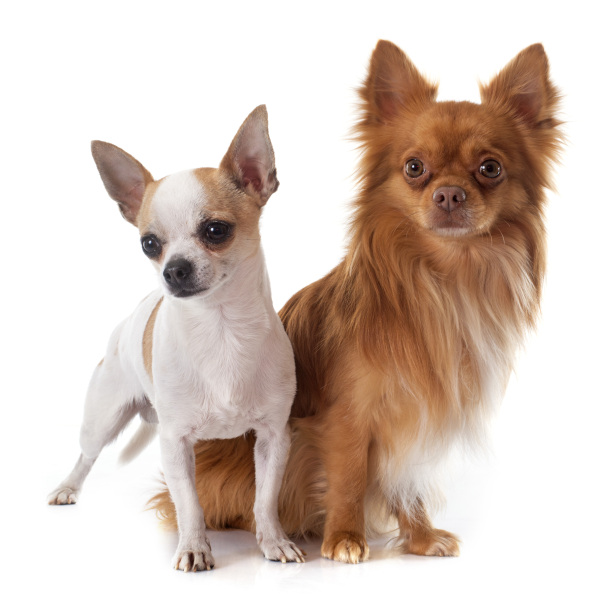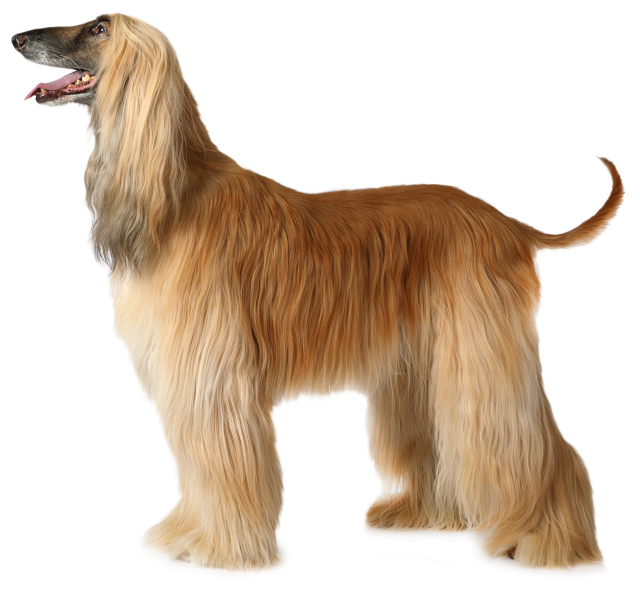Quick Summary

Click here for Price and Turnaround Time
Phenotype: Long hair. Some breeds are strictly short-haired (e.g. Beagles); some have both short- and long-haired individuals (e.g. Dachshunds); other breeds are characterized by long hair (e.g. Afghan Hounds).
Mode of Inheritance: Autosomal recessive
Alleles: S = Short hair, L* = Long hair (five variants)
Breeds appropriate for testing: Many breeds
Explanation of Results:
- Dogs with S/S genotype are expected to have short hair. They cannot transmit any of these long hair variants to their offspring.
- Dogs with S/L* genotype are expected to have short hair and are carriers of a long hair variant. They will transmit their long hair variant to 50% of their offspring. Matings between two carriers of a long hair variant are expected to produce 25% puppies with long hair.
- Dogs with L*/L* genotype are expected to have long hair. They will transmit their long hair variant to all of their offspring.
Sample Collection
Dog DNA tests are carried out using cells brushed from your dog's cheeks and gums. The preferred cytology brushes are sent to you by mail, or you may provide your own brushes. For accepted alternative brushes, click here
We recommend waiting until puppies are at least three weeks old before testing.

Step-By-Step:
- Make sure the dog has not had anything to eat or drink for at least 1 hour prior to collecting sample.
- When swabbing puppies, isolate each puppy from the mother, littermates and any shared toys for 1 hour prior to swabbing. Puppies should not have nursed or eaten for 1 hour prior to collecting sample.
- If collecting samples from more than one dog, make sure to sample one dog at a time and wash your hands before swabbing another dog.
- Label brush sleeve with name or ID of dog to be sampled.
- Open brush sleeve by arrow and remove one brush by its handle.
- Place bristle head between the dog’s gums and cheek and press lightly on the outside of the cheek while rubbing or rotating the brush back and forth for 15 seconds.
- Wave the brush in the air for 20 seconds to air dry.
- Insert brush back into sleeve.
- Repeat steps 5 - 8 for each unused brush in sleeve on a fresh area of cheek and gums. Make sure to use and return all brushes sent by the VGL. In most cases, it will be 3 brushes per dog. If using interdental gum brushes, please note that the VGL requires 4 brushes per dog and only moderate or wide interdental gum brushes are accepted.
- Do not seal brushes in sleeve.
- Place all samples in an envelope and return to the address provided.
ATTENTION:
- Do not collect saliva/drool – the key to obtaining a good sample is getting cheek cells on the swab
- Do not rub swab on the dog’s tongue or teeth – this will result in poor quality sample
- Do not collect a sample from a puppy that has recently nursed – the mother’s genetic material can rub off on the puppy’s mouth and contaminate the sample

Five recessive mutations (variants) in the fibroblast growth factor-5 (FGF5) gene are associated with long hair phenotypes in dogs. p.Cys95Phe (L) is the most common across breeds. c.578C>T (L2) occurs in Akita, Eurasier, Samoyed, and Siberian Husky breeds. c.556-571del16 (L3) occurs in Eurasier breed, c.559-560dupGG (L4) occurs in Afghan hound, Eurasier breeds, and French Bulldog, and g.8193T>A (L5) occurs in Afghan hound.
The long hair test offered by the VGL screens for all 5 variants. To simplify reporting, we designated the variants as L, L2, L3, L4, L5 as indicated above.
Note: Long hair is also known as Fluffy in the French Bulldog.
